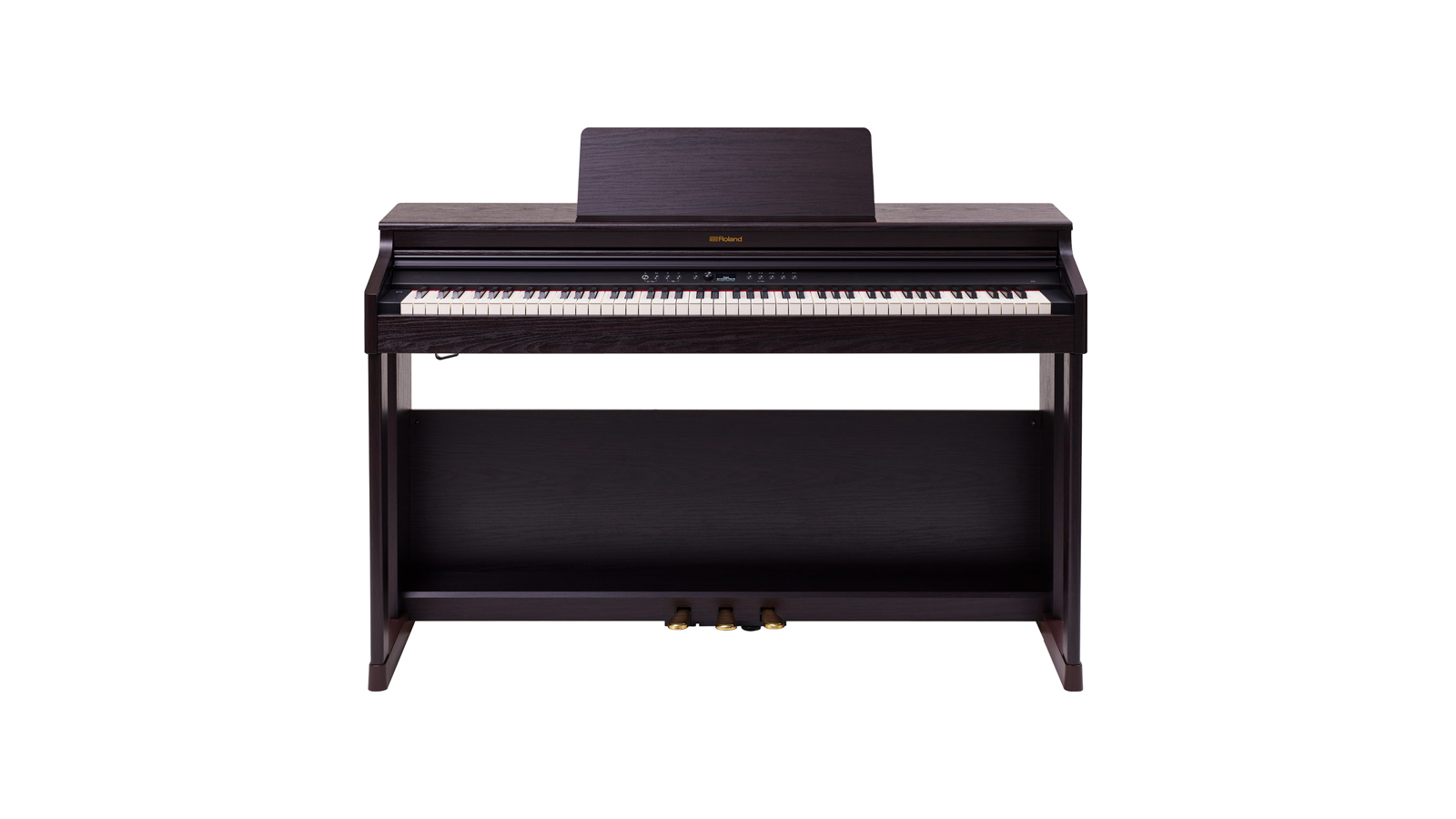MusicRadar Verdict
If the RP701 is an attempt to deliver a relatively affordable, feature-rich family starter piano, Roland would appear to have hit the nail squarely on the head. Priced to account for its - admittedly minor - limitations compared to the more expensive HP702, it looks classy, sounds great, plays well and has a large repository of excellent onboard tones.
Pros
- +
Lots of great tones
- +
Keenly priced
- +
Perfect for beginners and beyond
- +
Bluetooth Audio / MIDI
Cons
- -
Odd volume control
- -
Headphone jacks difficult to access
MusicRadar's got your back
Roland RP701 review: What is it?
It's fair to say that the current range of Roland digital pianos is pretty densely populated, which is fantastic in terms of consumer choice. It can make things a little bewildering when trying to choose the right instrument, however. Their recent model-naming scheme frankly isn't much help, making it tricky to differentiate between models with names like R107, F107, F701, RP701 and HP702. This review looks at the RP701, a more affordable and slimmed-down version of the Roland HP702, aimed primarily at home players, beginners and students. But why would you buy the RP701 over any of the other models in the lineup?
The RP701 (RP stands for Roland Piano) is a full-size console model with Roland's acclaimed PHA-4 88-key piano action key bed installed in a real wood cabinet that emulates the look of a small upright acoustic piano. Sitting in the range between the better-appointed HP702 and the ultra-slim, entry-level R107 and F107 models, the RP701 is essentially the same piano as the F701 but housed in a different, more traditional cabinet design with a recessed, sliding keyboard cover.
Available in four finishes - Dark Rosewood, Contemporary Black, Light Oak and White - there's an impressive total of 324 sounds onboard and it's capable of streaming audio via Bluetooth through the onboard speakers, allowing you to play along with songs from your mobile device's song library.
Roland RP701 review: Performance & Verdict
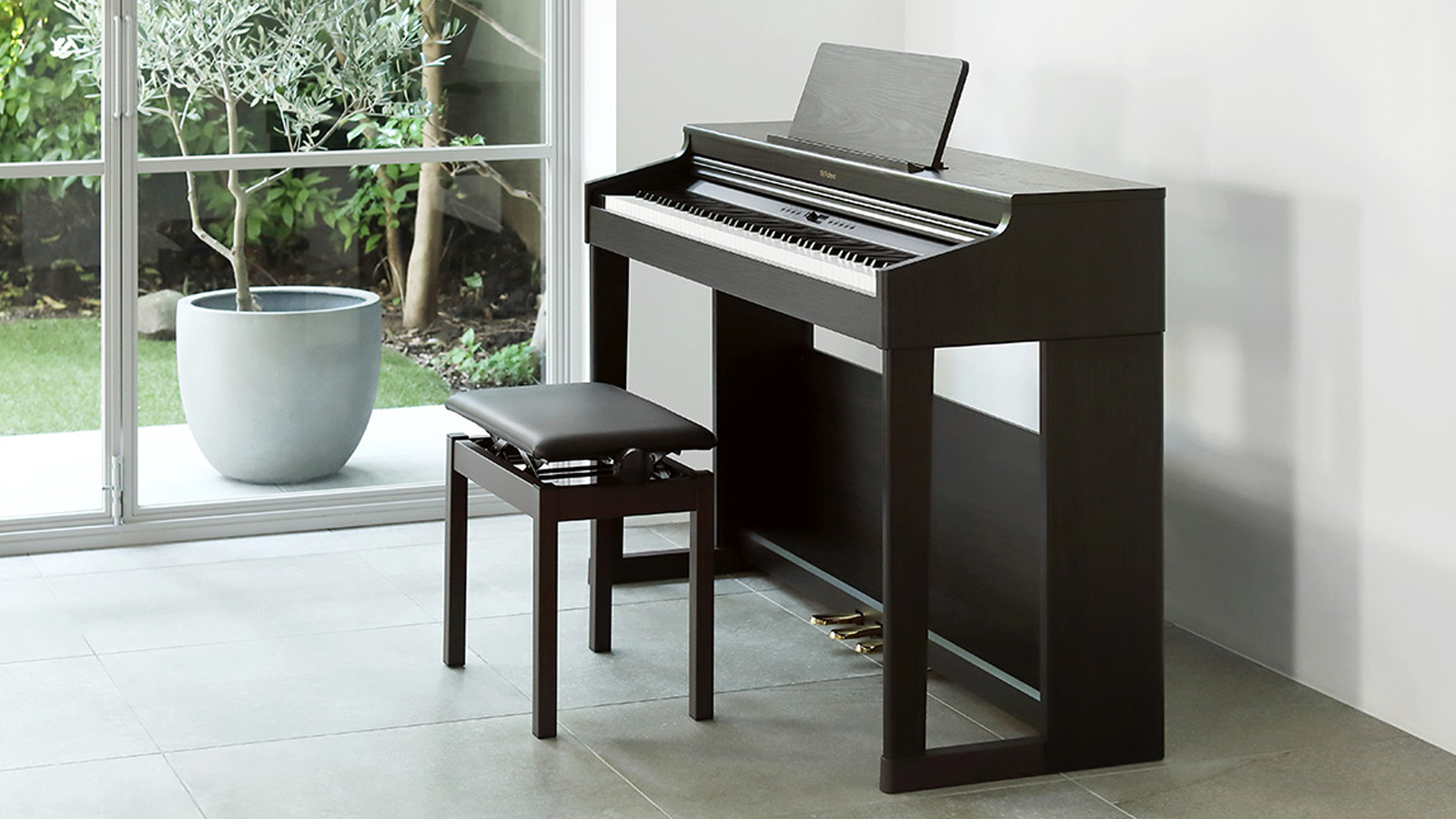
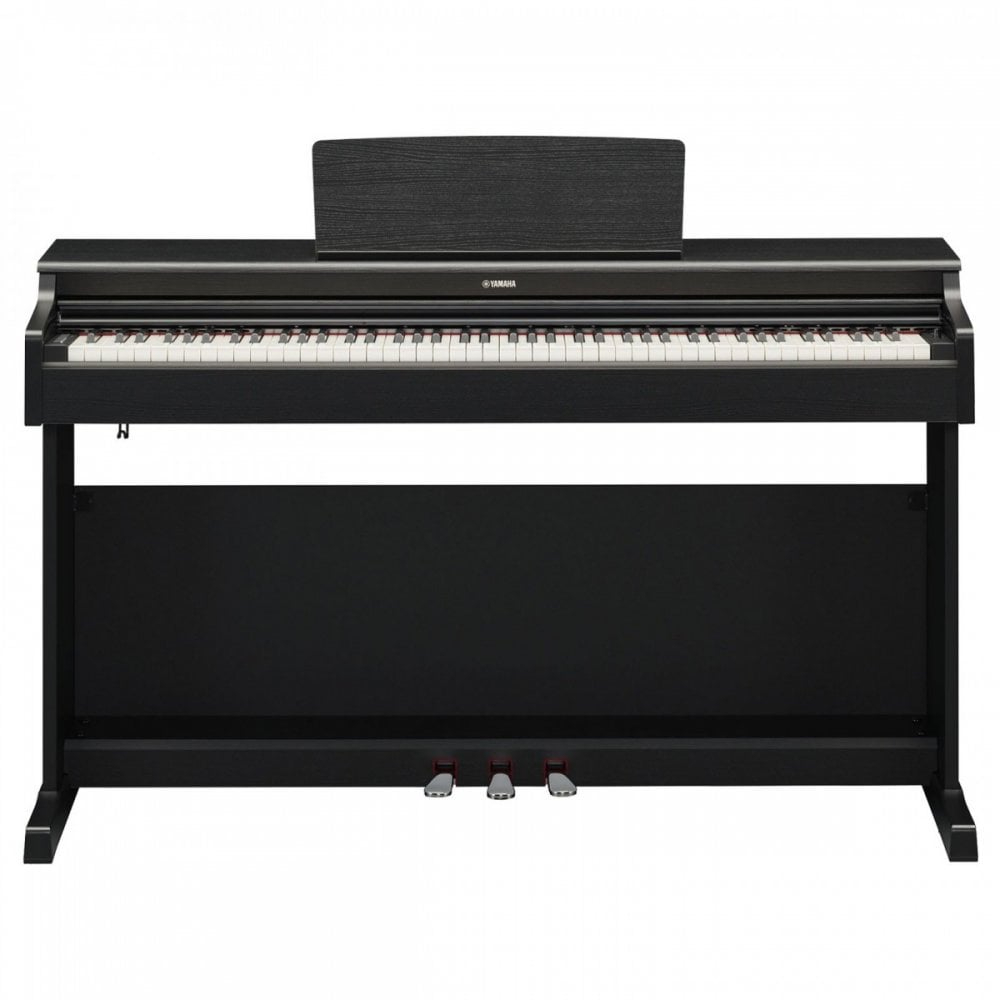
Yamaha Arius YDP165: Entry-level home console piano from Yamaha with a doozy of a CFX concert grand piano voice hitched to a GH3 hammer action keyboard.
Casio Celviano AP470: Great mid-range digital home piano from Casio, with 22 tones, Tri-Sensor Hammer Action II keyboard, acoustic simulator and a lid that physically opens and closes
Both the RP701 and the HP702 feature Roland's SuperNATURAL acoustic piano modelling technology, but the version in the RP701 features sampled attack transients, in contrast to the HP702's version which is all physical modelling. Although the differences between the two approaches are very subtle to the average player's ear, the RP701 delivers a piano tone that, while still beautifully authentic, is not quite as versatile.
Both instruments allow detailed customisation of the acoustic piano sound via Roland's Piano Designer mode, but the RP701 doesn't offer quite the same degree of flexibility and expression as the HP702, with only half the number of available parameters. This means that you can make adjustments to certain aspects of the piano sound such as string, damper and key off resonance, virtual lid position and the tuning, volume and character of individual notes. However, you don't have access to the more advanced features found on the pricier HP702, such as key off noise, hammer noise, duplex scale, cabinet resonance, soundboard type and damper noise.
If you're just starting out, or the ability to adjust these advanced parameters isn't of great importance to you, we wouldn't let this restriction put you off - the RP701 is still an incredibly capable and rewarding instrument to play, and it's these little downward tweaks, along with other cost-saving measures - such as a half-height modesty panel and plastic rather than steel strut extending out to the front legs - that go towards making it the more affordable instrument of the two.
The PHA-4 Standard keyboard found on the RP701 is the same as that found on the majority of Roland's entry-level and mid-range digital pianos. Its implementation here is excellent as usual - playable and responsive, and for beginners who may find the action a little bit on the heavy side, the Piano Designer mode's key touch setting can be adjusted to make things easier.
Want all the hottest music and gear news, reviews, deals, features and more, direct to your inbox? Sign up here.
Panel beating
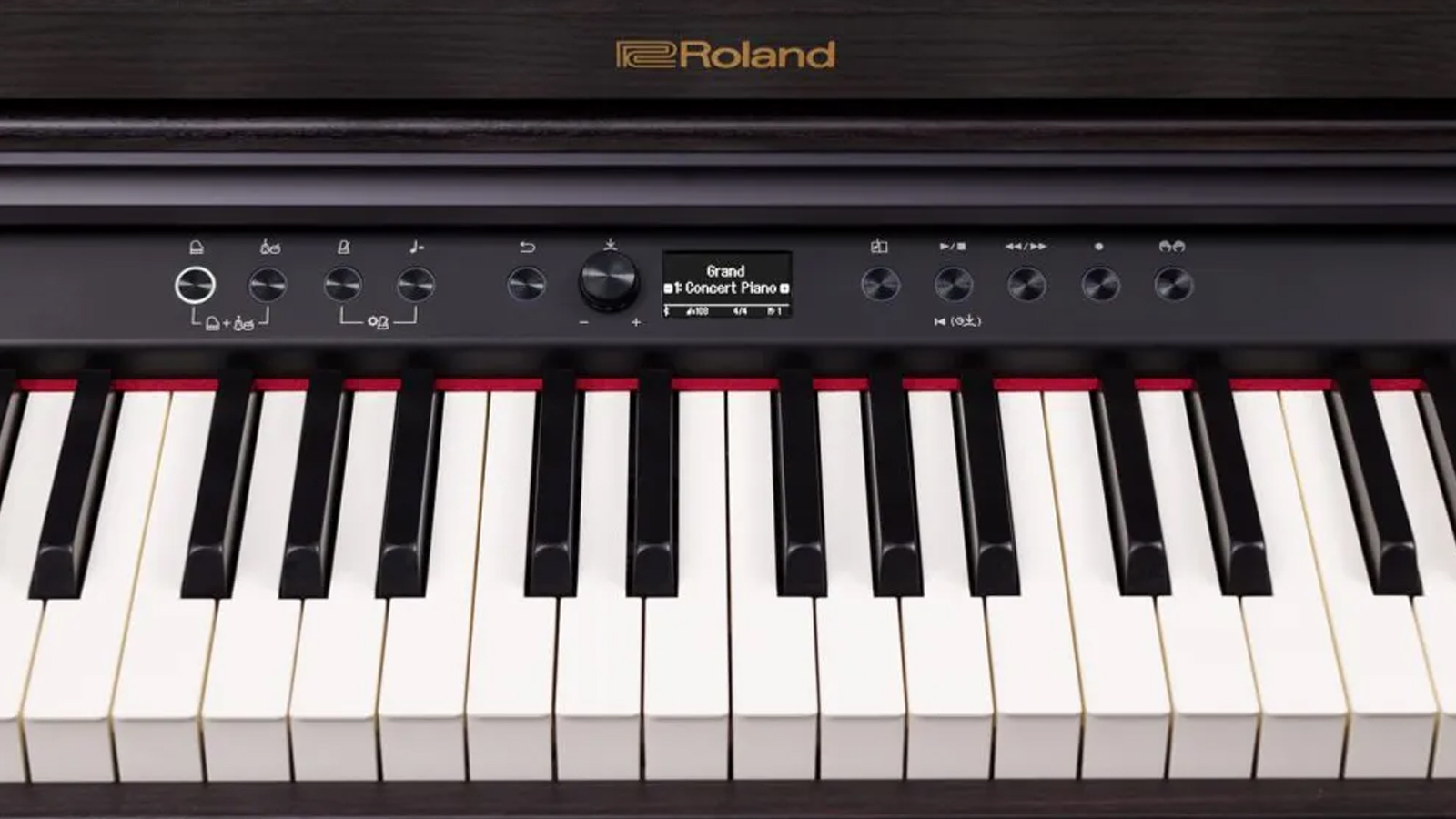
The RP701's control panel is not as immediately approachable as the HP702's, but is still more hands-on than that found on the overly-minimal F107. More streamlined than that found on the HP, with fewer buttons and a largely icon-based interface, it's designed to be easier for young students to get to grips with. We actually found this a bit hard to fathom at first glance, but things do eventually become familiar once you've figured out what all the symbols mean. In spite of this, in our 'turn on and play' test - the measure of how easy it is to sit down at the instrument, switch it on and start playing - the RP701 passes with flying colours, coming to life and achieving ready status in a matter of a few seconds.
Located between two banks of five buttons, the central 128 x 64-dot OLED display screen is bright and clear and does a solid job of conveying the necessary information. The adjacent rotary encoder is easy to operate - simply turn the dial to select the required function, then push it to enter edit mode and turn again to change the selected parameter value - pretty simple stuff.
Over on the left of the keyboard, there are four more buttons, two of which are used to control the instrument's volume, one for up and one for down. We found this to be somewhat imprecise, since it has to distribute 100 levels of volume across five LED stages - we'd have much preferred a volume slider or rotary encoder for more precise control. An on/off button and Bluetooth pairing button round things off in this section.
The same type of LED-halo-equipped buttons work fine across the rest of the interface though, for things like sound category selection, accessing the settings menu and control of the playback of the 300+ onboard songs, 287 of which are practice exercises by the likes of Hanon and Czerny. Since it's designed more as a practice piano for beginners, the RP701 doesn’t have a registration memory feature, so there's no way to save your edited sounds and setups for quick and easy recall.
If you want to hide the central controls and just focus on your playing, you can pull the recessed keyboard cover forward slightly to a notched position known as 'Classic Position' designed to cover them up and preserve a more traditional look.
Lowering the tone
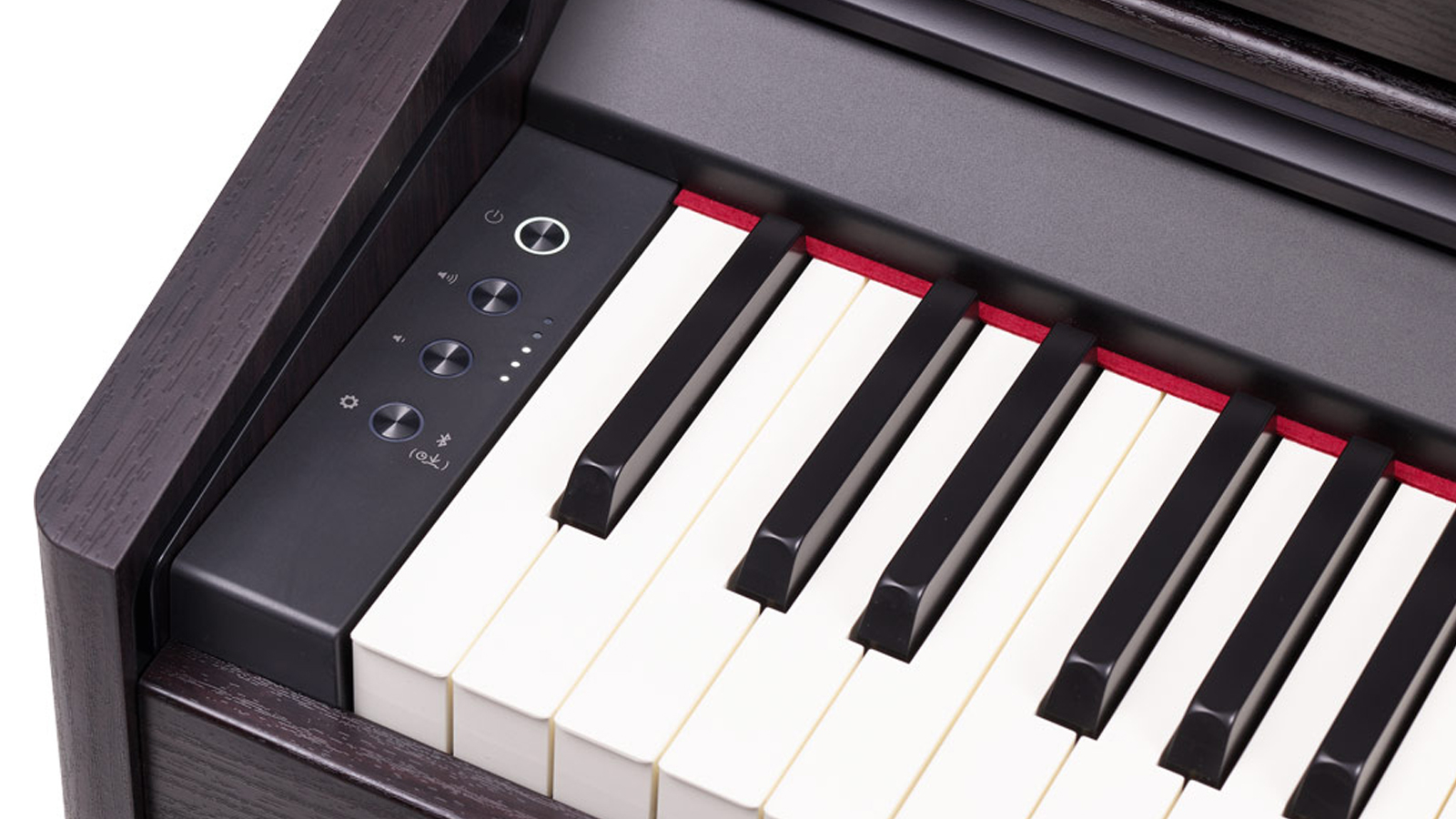
From a sonic perspective, the wooden cabinet and twin 12W speakers do a fantastic job of enhancing the acoustic piano tones generated by the tried-and-tested SuperNATURAL sound engine, delivering a response and feel that's very authentic. The sound is rich and involving with just a hint of that signature Roland brightness, and there are four piano sound categories onboard - Grand, Upright, Classical and E.Piano.
The built-in pedalboard houses the full complement of three pedals - the progressive damper action pedal supports half-pedalling, and the middle sostenuto pedal works as expected, keeping held notes sustaining while allowing non-sustained notes to be played over the top. This pedal setup will stand any player in good stead, from the absolute beginner right through to the more advanced, classically-trained student.
Connectivity-wise, there are two headphone jacks of different sizes - 6.3mm and 3.5mm - a 3.5mm stereo line input jack for connecting a music player or mobile device to play along to, plus a USB port. These are all located on the underside of the keyboard towards the left of the instrument. While this does avoid painfully catching your left knee on a protruding box, it does make the ports rather inaccessible without dangling sideways upside-down from the piano stool and peering up from underneath. If you feel around a bit, you'll also discover a handy headphone hook under the left edge of the keyboard.
Tablet controlled
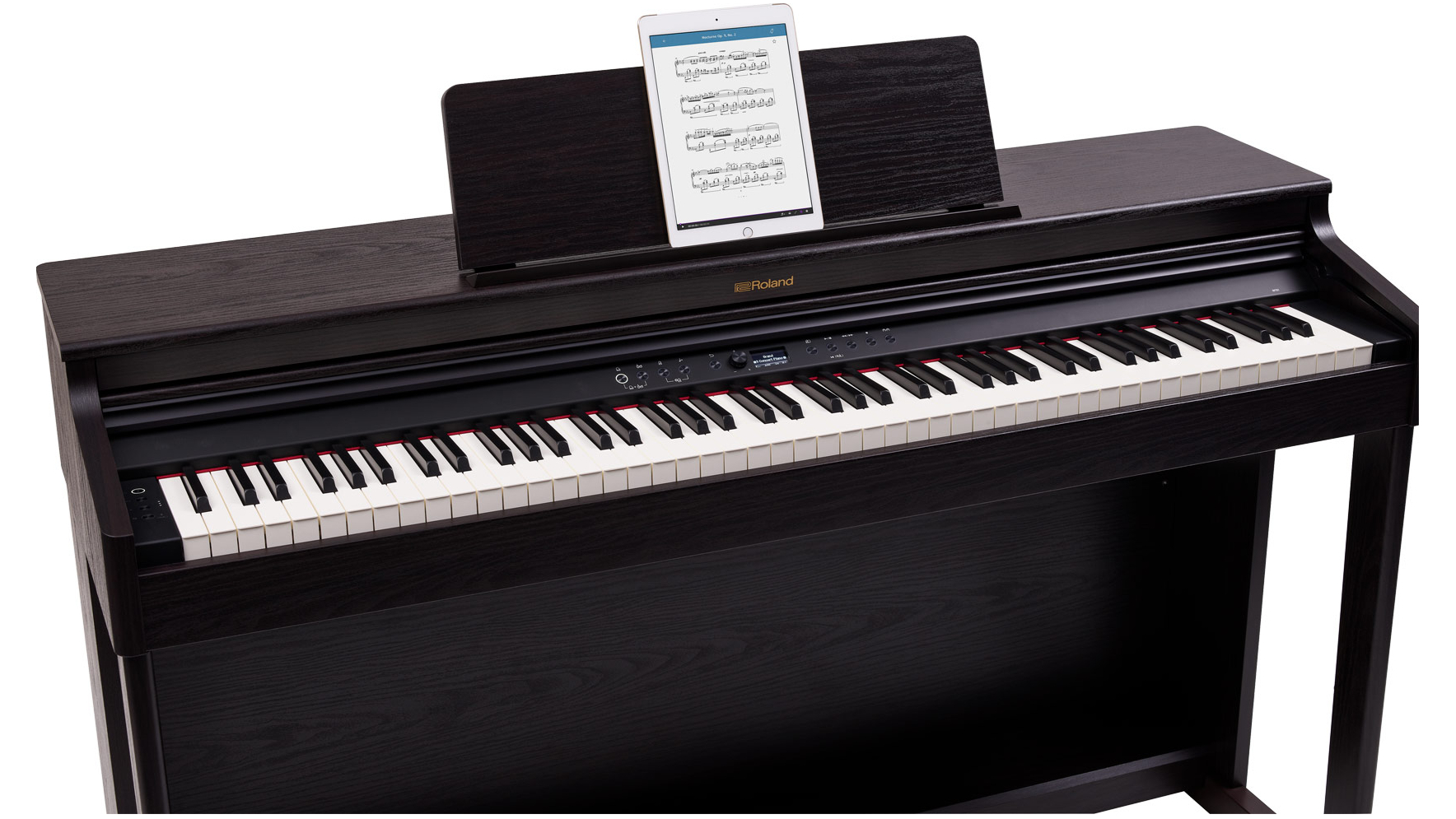
Like most of the current Roland piano range, the RP701 has been designed to work with the Roland Piano app, which offers musical exercises, performance evaluation tools and easier access to the recording features. Pairing your piano via Bluetooth with a mobile device not only allows you to connect with the app, but also unlocks access to the best online piano lessons such as Skoove, Flowkey and Playground Sessions.
The pairing process is simplicity itself, after which you get access to all the internal sounds, extra GM sounds and accompaniment styles that you can’t get at from the front panel. This is a continuing trend that seems to have prevailed of late, and it’s a very welcome bonus feature, but it does rather curtail what you can do with the piano if you don’t happen to have access to a mobile device.
Final verdict
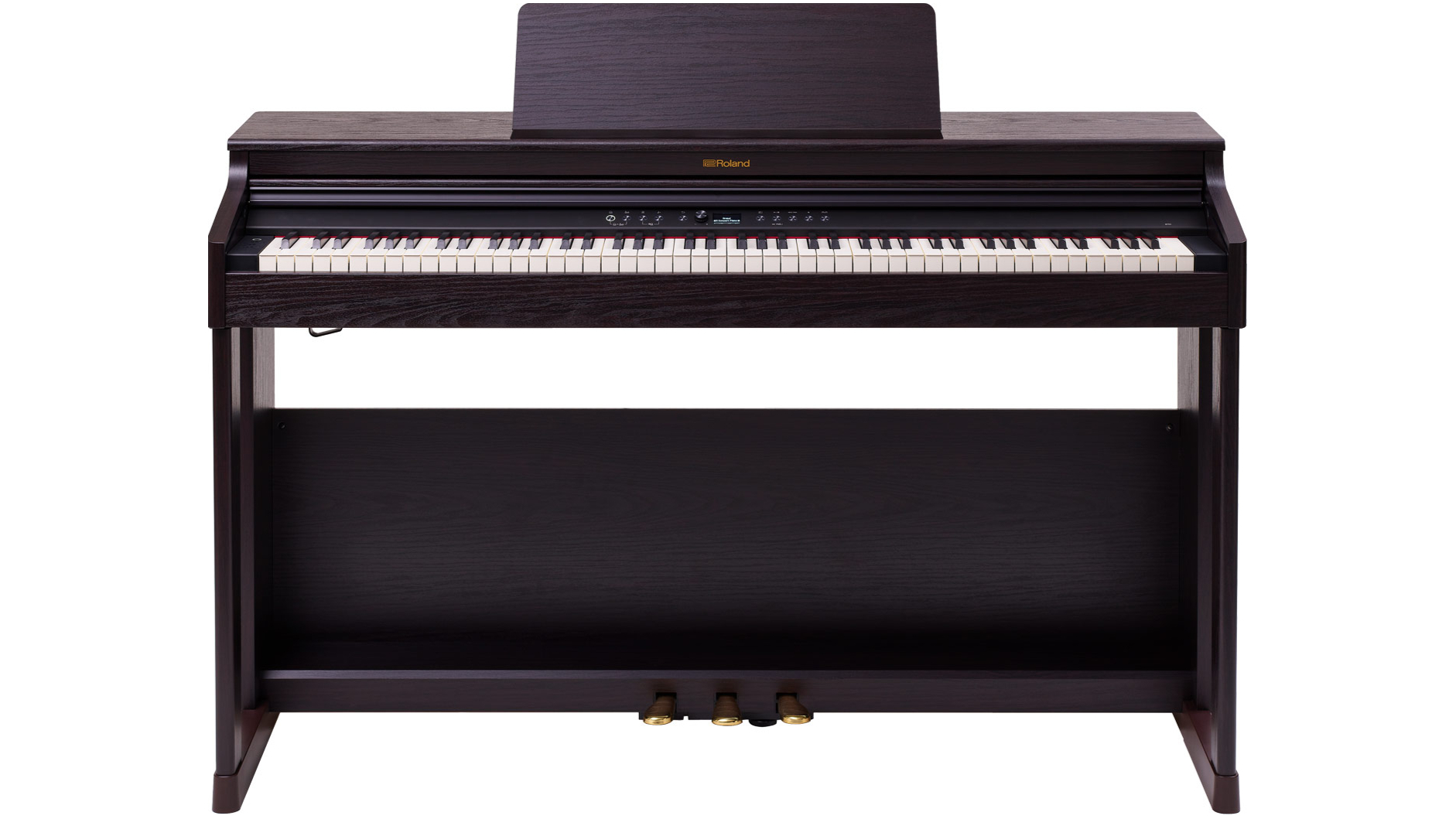
If the RP701 is an attempt to deliver a relatively affordable, feature-rich family starter piano, Roland would appear to have hit the nail squarely on the head. Priced to account for its - admittedly minor - limitations compared to the more expensive HP702, it looks classy, sounds great, plays well and has a large repository of excellent onboard tones. Roland like to push their pianos far beyond the remit of a traditional acoustic instrument, and the ability to play along with your favourite songs via Bluetooth or use smartphone apps to help you improve your playing really makes the RP701 an attractive proposition for your first proper digital piano - as long as you have a mobile device to match.
Roland RP701 review: Hands-on demos
Alamo Music Center - Pianos and Keyboards
Merriam Music
Roland RP701 review: Specifications
- Polyphony: 256
- Tones: 324
- Songs: 377 (Includes 287 Lesson Exercises)
- Keys: 88-note PHA-4 Standard Keyboard with Escapement and Ivory Feel
- Pedals: Progressive Damper Action, Soft, capable of continuous detection, Sostenuto (function assignable)
- Speakers: 2 x 12W
- Connectivity: 2 x Headphone ports (5.3mm and 3.5mm), USB to host port, USB Memory port, 3.5mm Audio input jack, DC input for external PSU,
- Dimensions (W x D x H, mm): 1366 x 463 x 1027
- Weight: 46kg
- Contact: Roland
Dave has been making music with computers since 1988 and his engineering, programming and keyboard-playing has featured on recordings by artists including George Michael, Kylie and Gary Barlow. A music technology writer since 2007, he’s Computer Music’s long-serving songwriting and music theory columnist, iCreate magazine’s resident Logic Pro expert and a regular contributor to MusicRadar and Attack Magazine. He also lectures on synthesis at Leeds Conservatoire of Music and is the author of Avid Pro Tools Basics.
